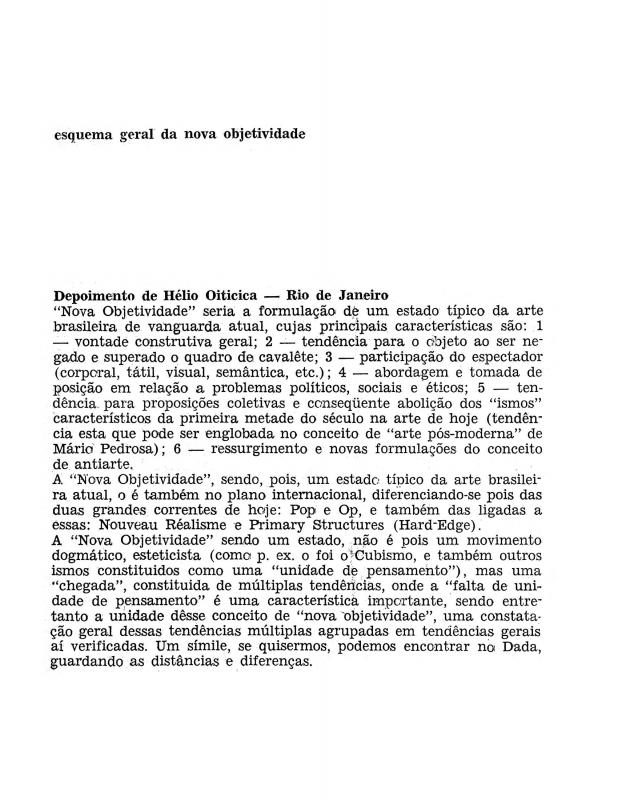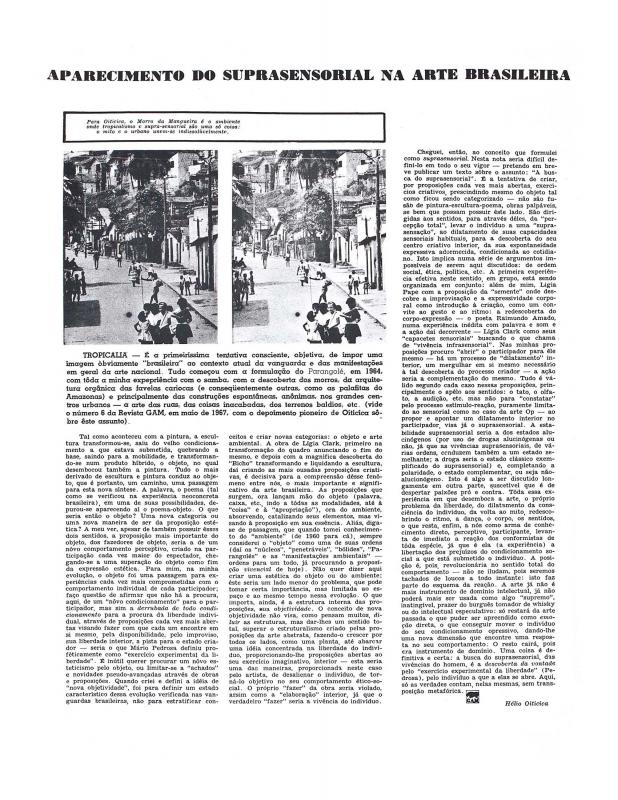This document is a reminder that the artist Hélio Oiticica was also an art critic. In 1965, as constructivist utopias were fading, he spoke out in support of a (necessary) distancing from theoretical formulations of a rational nature, advocating instead an approach to art as a form of individual expression. As he examines the work of Amílcar de Castro (1920–2002), Oiticica detects certain signature characteristics in the sculptor’s creative process which reappear in his later works, confirming de Castro’s tendency to create his sculptures based on a single gesture. De Castro was one of the signatories to the Manifesto Neoconcreto, and took part in the Primeira Exposição Neoconcreta, which was also held in 1959.
Hélio Oiticica (1937–80) was a Brazilian Neo-Concrete artist. He started studying painting with Ivan Serpa in 1954 at the Museu de Arte Moderna do Rio de Janeiro. He later joined the Grupo Frente and the Neo-Concrete movement. In addition to his geometric paintings, which he worked on while he was studying with Serpa and was a member of the Grupo Frente, Oiticica produced performance and participatory art. His Parangolés (1964)—capes made with fabrics and recycled materials—were worn by the Mangueira Samba School during their performances. Oiticica also created immersive spaces, such as Nucleus (1959–60), which was an installation constructed from suspended painted wooden slats inspired by the Constructivism of Piet Mondrian. In 1967 Oiticica created the immersive environment Tropicália at the Museum of Modern Art in Rio de Janeiro. Tropicália was an installation consisting of rooms with plants and materials such as water, sand and stones, a parrot, a television set, and various other elements that were representative of Brazilian popular culture. The environment was designed to promote sensory stimulation. Oiticica applied the same principles to Eden, the installation he created in 1969 at the Whitechapel Gallery in London. The name Tropicália was used by Brazilian musicians to describe a new style that combined international music and pop with traditional Brazilian music. The term “Tropicália” was absorbed into popular Brazilian culture and came to signify a uniquely Brazilian essence. In 1970 Oiticica took part in the group exhibition Information at the Museum of Modern Art in New York.
For more examples of Oiticica’s thoughts on Brazilian art in the late 1960s and early 1970s, see the essay “Esquema geral da nova objetividade” [doc. no. 1110372], and the article “Aparecimento do suprasensorial na arte brasileira” [doc. no. 1110620].


